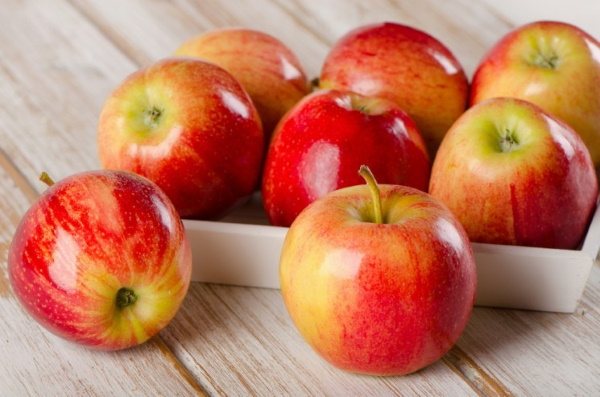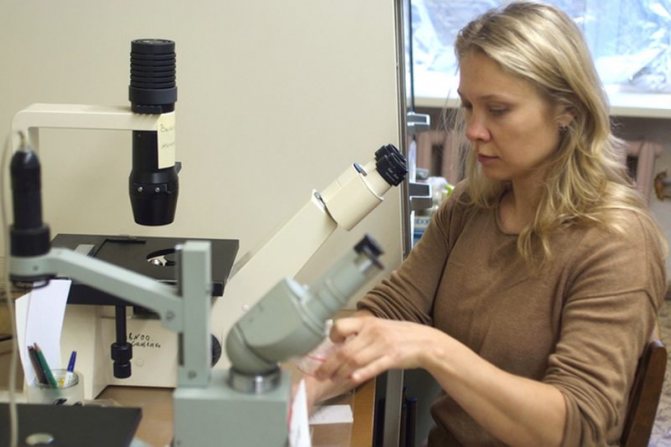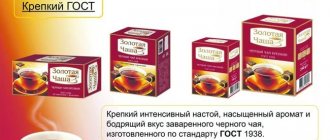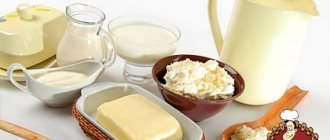You can preserve the appearance and extend the shelf life of the product using food additives. The full catalog contains several hundred items that are incomprehensible to the average consumer.
Probably only food technologists and chemists understand what each “E” stands for. Most additives are not only harmful to our body, but also especially dangerous.
In this article we will look at the table of prohibited E-additives in Russia.
Classification of food additives
When purchasing any food product, on the back of the package you can see that the composition contains various substances in the form of the prefix “E” and various numbers.
What exactly do they mean? In fact, everything is simple: “E” is for Europe, and the numerical code is the digital designation of the food additive.
All additives are divided into 8 large categories according to their functions . Let's look at them in table form:
| Category | Name | Functions |
| E100-182 | Dyes | Restore or enhance the color of the product |
| E200-299 | Preservatives | Extend shelf life by protecting products from fungi and microbes |
| E300-399 | Antioxidants | Prevents product oxidation |
| E400-499 | Stabilizers | Maintain the product at the required consistency |
| E500-599 | Emulsifiers | Maintain a homogeneous mixture |
| E600-699 | Amplifiers | Enhance the aroma and taste of the product |
| E900-999 | Anti-flaming additives, flour improvers, sweeteners, glazing agents | Preserve the appearance of the product and prevent the formation of foam |
| E1100-1105 | Enzyme substances | Maintains the appearance of the product |
E700-899 are spare indexes.
The complete list of food additives that are permitted for use in the food industry and import into the territory of the Russian Federation is defined in Appendix No. 1 of SanPin 2.3.2.1293-03.
The regulatory legal act is the Resolution of the Ministry of Health No. 59 of April 18, 2003. The responsible bodies are Rospotrebnadzor and the Ministry of Health.
If, based on research results, an additive is found to be hazardous to health, it is removed from the List. In this case, a decision is made prohibiting the use of the food additive.
It is worth noting that the List does not contain the names of food additives that are not permitted in Russia. These are substances whose safety or danger have not yet been proven. For example, E233 is thiabendazole preservative, E925 is chlorine bleach.
Where is Citric acid found in nature, in products?
The naturalness of citrus acid as a dietary supplement is proven by its presence in a number of natural products, which not only do not harm human health, but some of them are even recommended by therapists for daily use.
Scroll:
- lemons;
- Chinese lemongrass fruits;
- oranges;
- grapefruits;
- tangerines;
- gooseberries (at the ripening stage);
- currant;
- blackberry;
- blueberry;
- pineapples;
- apples.

High concentrations of citric acid are also noted in:
- stems of tobacco crops;
- coniferous plants;
- shag leaves.
Prohibited food additives in the Russian Federation
The list of prohibited E-additives in Russia is not that long. For 2021 it includes 8 titles:
- Synthetic dye E121 (citrus red). It is a toxic substance and is a carcinogen. It has a destructive effect on the human respiratory and urinary system, causes the appearance of malignant tumors and promotes the growth of cancer cells.
- Artificial dye E123 (amaranth). Recognized as a carcinogen, according to test results. Increases the risk of malignant tumors, promotes the appearance of intrauterine defects of the fetus and delays its development.
- Artificial dye E128 (red 2G). Carcinogen. Affects the nervous system: causes impaired coordination, memory, and a state of general malaise.
- Preservative E216 (propylparaben). The strongest allergen. Causes breast cancer in women and infertility in men.
- Preservative E217 (sodium salt). Contraindicated for people suffering from asthma and allergies. Causes headaches, disruption of digestive functions, and promotes the growth of malignant tumors.
- Preservative E240 (formaldehyde). It provokes the appearance of cancer, in particular of the nasopharynx.
- Bakery improver E924a (potassium bromate). Carcinogen. Has a toxic effect on the urinary system.
- Bakery improver E924b (calcium bromate). Toxic to human mucous membranes and skin, causing rapid growth of malignant tumors.
Reasons for the ban
Banned food additives in Russia are recognized as such for a reason. There are certain criteria according to which an additive is recognized as dangerous and a ban is imposed on it when imported and used in food production.
These include:
- the additive is recognized as a carcinogen, that is, it causes the appearance of malignant tumors;
- the additive causes allergic reactions;
- the additive has a toxic effect;
- the additive has an adverse effect on human health as a whole, that is, it disrupts the functioning of the central nervous system, urinary and digestive organs, the neurovascular system, and the reproductive system.
Above, we described in detail how prohibited additives affect human health.
Obtaining citric acid
It seems logical to explain that citric acid is made from lemons.
Well, that's how it used to be .
Shag and lemon juice were mixed.
But with the development of the chemical industry, this became unprofitable, and citric acid began to be synthesized from sugar using a fungus that causes fermentation.
Yes, yes, the fungus is involved in the production of this antioxidant .
The same black mold that you can see in your bathroom, for example.
Therefore, now it is impossible to call this supplement exclusively natural and harmless.
Recently, more and more information has appeared that citric acid is a genetically modified product (i.e., obtained using GMO microorganisms), which means that consuming this additive in food is not at all beneficial for our health.
Harmful but not prohibited additives
In fairness, it is necessary to say about food additives that are allowed in Russia, but can be harmful for people suffering from chronic diseases.
These include:
- E131-132, E214, E210, E230-232, E239, E160b, E311-313 – cause allergies.
- E107, E110, E122-124, E155, E214 - have a harmful effect on the body of people who are sensitive to aspirin.
- E103, E105, E121, E123, E125-126, E142, E152, E130-131, E153, E210-215, E230-233, E924a, E924b – cause the formation of malignant tumors. People who are prone to developing cancer are at risk.
- E102, E107, E155, E122-124, E211-214, E221-227 - pose a danger to asthmatics.
- E127 – affects the functioning of the thyroid gland.
- E233 is dangerous during pregnancy because it affects the development and growth of the fetus.
- E320-321 – increases blood cholesterol levels.
- E220-E226 – causes gastrointestinal diseases.
- E220, E171-173, E302, E510, E320-322, E518 – cause liver and kidney diseases.
- E407, E338-341, E450-454 E461-466 – contribute to indigestion.
- E249, E262, E320, E296, E310-312, E514, E620-621, E623, E626-635 - dangerous for infants and small children.
- E102, E110, E104, E122, E124, E129, E211 - make children hot-tempered and impulsive, distracting attention.
As you can see, it is impossible to keep all these codes in your head . Therefore, when going to the store, arm yourself with a list of prohibited and dangerous food additives.
Harm of the supplement
Natural citric acid in fruits is well absorbed by the human body, giving it energy. This effect does not exist in a substance obtained by chemical synthesis. In Russia it is included in the list of permitted substances and is considered safe for health. Therefore, it is used in most purchased products.
Harm is associated with high levels of its concentration in products and frequency of use. Experts highlight the following negative effects of the supplement:
- destruction of tooth enamel and the appearance of caries;
- increased tooth sensitivity;
- a burn to the stomach, the symptoms of which are severe pain, vomiting blood and coughing;
- development of gastrointestinal diseases: ulcers, pancreatitis, gastritis, cholecystitis;
- the appearance of cancer (if consumed in large quantities).
The E330 additive in food products interacts with other harmful substances, which makes such food products unnatural and undesirable for consumption.
Citric acid is often used at home to make confectionery and drinks. When in direct contact with the additive, you need to be extremely careful, remembering to follow safety rules. It is dangerous if the concentrate gets on the skin - a burn is possible. If in contact with eyes there is a risk of loss of vision. If it does get into your eyes or mucous membranes, you should rinse them with water and immediately consult a doctor.

Catalog table of the most commonly used food additives
The full table E is too large. The list includes thousands of substances. Therefore, below is a description of the most common substances in the food industry.
Healthy food supplements
| Name of the additive in the “e” list | Description | Usage | Effect on the human body |
| e100 | The dietary supplement is made from turmeric and other plants of the ginger family. | Curcumin is used to color plant and animal products. Used in some dietary supplements. | Researchers indicate that curcumin does not have significant effects in humans. In certain concentrations it causes the death of cancer cells without negatively affecting healthy tissue. |
| e129 | The dye is made from coal tar. | Gives products a red tint. | Studies on rainbow trout have shown that the use of e129 reduces the risk of stomach cancer by 40%. |
| e296 | Malonic or malic acid. It is obtained synthetically during the reduction reaction of tartaric acid. | E296 is used to enhance flavor. Found in candies and other confectionery products that use artificial flavors. | E296 is harmless to the body. Malic acid improves body tone. |
| e306 | Mixture of tocopherols. Synthesized from plant materials. | Antioxidant, prevents the oxidation of certain substances, for example, vitamin A. Used in desserts, meat pies, and dairy products. | e306 binds free radicals in the body, preventing them from interacting with cell tissues. As a result, the risk of cancer is reduced and immunity is increased. |
| e401 | Sodium salt of alginic acid. | E401 is used as a stabilizer and thickener in sauces, jellies, jams and other mixtures. The compositions maintain homogeneity and viscosity. | No harmful effects of the e401 additive on humans have been recorded. In large doses, it can bind radionuclides and heavy metals, removing them from the body. |
| e407 | Carrageenan. Made from red algae. Thickener. | The substance forms a gel. In the production of ice cream, dairy products, and confectionery, carrageenan helps to make the mass homogeneous. | Has a slight antiviral effect, anticoagulant. Relieves the symptoms of stomach ulcers. |
| e414 | Gum arabic. Processed resin from trees of the acacia class. | It is used in the production of cookies, sweets, soft drinks, marshmallows, glazes to prevent the formation of lumps, foam, and sugaring. | The e414 supplement does not cause allergic reactions and removes heavy metals from the body. |
Relatively harmless and neutral food additives
Many substances used in the food industry do not have a pronounced negative effect. Frequently used ones are presented in the following table of dietary supplements.
| Additive name | Description | Usage | Effect on the human body |
| e 104 | Synthetic yellow dye. | e 104 is added to drinks, candies, groceries and other products for coloring. | In 2007, British researchers found that the use of this dye can cause hyperactivity in children. Later, the evidence base for the effect of E 104 on behavior was considered weak. |
| e120 | Carmine. Made from cochinel beetles. | In the food industry it is used for coloring red. Usually in sausages and sausages. | No positive or negative reactions of the body to this substance have been recorded. |
| e133 | A dye obtained from coal tar. | The substance, in combination with other compounds, gives drinks, ice cream, and desserts a green color. | Supplement E133 may cause an allergic reaction in people intolerant to aspirin. |
| e150a | Sugar color. An emulsifier produced by heating and decomposing sugar. | Emulsifier and brown colorant. Used in the production of alcoholic drinks and desserts. | E150a is completely safe for health. Excessive consumption of products with it may cause gastrointestinal upset. |
| e160 | Carotene. Obtained from carrots, corn, palm oil. | Yellow-orange dye. Usually added to dairy products (cheese, yogurt, etc.), mayonnaise, and baked goods. | The substance does not have a harmful effect on the body in doses used for coloring food. In high concentrations it is used in medicine to treat diseases of the organs of vision. |
| e262 | Sodium salt of acetic acid. You can get it at home by extinguishing baking soda with vinegar. | Preservative. Prevents the growth of bacteria. | A strong allergen that can interfere with kidney function. The substance is part of the cell cytoplasm, so an active reaction occurs in a small number of people. |
| e316 | Sodium isoascorbate. It is obtained from beets, corn, sugar cane. | Antioxidant. Protects meat and fish products from oxidation and discoloration. Used in bread and confectionery production. | According to E 316, it is indicated that the body of a healthy person tolerates it neutrally. |
| e321 | Ionol. It is obtained by the reaction of paracresol with isobutylene. | Added as an antioxidant to cereals, muesli, granola, oils and other products to reduce the rate of autoxidation of substances. | Some countries have recognized the E321 additive as carcinogenic, but no definitive evidence has been provided. |
| e331 | The food additive is obtained by the interaction of citric acid and sodium salt. The technical name is sodium citation. | Antioxidant with a sour taste. Added to drinks, marshmallows, soufflés and other products to slow down the process of autoxidation. | The chemical compound is formed naturally in the body of any person. Does not cause allergies or other negative reactions. |
| e 341 | Calcium phosphate. Obtained by the interaction of orthophosphoric acid and lime milk. | Stabilizer, acidity regulator, color fixative. Added in the production of bakery products, drinks, breakfast cereals, milk powder, etc. | The additive is not included in the list of prohibited products in Russia and EU countries. Does not have a positive or negative effect on a person. |
| e470 | Group of substances: magnesium, calcium, ammonium salts of oleic, palmitic, myristic and stearic acids. | Stabilizer and emulsifier. Prevents clumping and caking. E470 is used in the production of powdered soups, powdered sugar, etc. | The E470 additive has no harmful properties to humans. |
| e471 | The nutritional supplement is formed during the breakdown of fats. | The compound can replace animal fats in mayonnaise, margarine, ice cream, yogurt, etc. | The substance is neutral. The chemical composition is close to animal fat, so it is processed by the body without consequences. |
| e472 | The code denotes a group of fatty acid esters. | Emulsifier and thickener. The additive is used to make chocolate, sausages, sauces, cookies, etc. | There is no confirmed data on the harmful or beneficial properties of e472. |
| e474e | Mixed glycerol esters. | e474e is used for plasticizing dough. Used in the preparation of bakery products, in the production of pasta, etc. | The e474e additive is safe and approved in many countries around the world. |
| e 475 | Polyglyceride is obtained by the synthesis of glycerol with aliphatic carboxylic acids. | Emulsifier and stabilizer. Increases product viscosity. Found in desserts and sweets. | Numerous studies have been conducted on E 475. There is no benefit or harm to humans. |
| e476 | Lecithin of plant origin. | Emulsifier, used in the preparation of chocolate and other confectionery products. | Harmless. |
| e503 | It is formed during the heating of ammonium chloride and its reaction with water and carbon dioxide. | Emulsifier. E503 is used in cookies, cakes and other products. | e503 can only be dangerous in its original state. In food products it is not harmful to humans. |
| e635 | Sodium 5-ribonucleotides. | Additive E635 enhances taste and smell. Added to chips, crackers and other snacks. | The danger of the E635 additive for humans has not been established. |
| e1414 | This is a thickener obtained from plant grains, bulbs, seeds, and stems. Modified starch. | Additive e1414 is used when canning fish, baby food, yoghurts and other products as a thickener and consistency stabilizer. | The substance e1414 is only partially absorbed by the body; a dangerous concentration for humans has not been established. Such effects are possible only with individual allergic reactions. |
| e1442 | Modified starch. | Emulsifier, used in the preparation of dairy products. | The danger of E 1442 has not been confirmed. |
| e1450 | Ester of starch and sodium salt of octenyl succinic acid. | Gives homogeneity to the product. Added to drinks, cheeses, sauces, etc. | E1450 is processed by the body without consequences. |
| e551 | Silica. | It is used in powder products and dry mixtures as an anti-caking agent. | Absent. |
Harmful food additives
Harmful additives whose negative effects on humans have been confirmed are prohibited from use. This table presents food additives whose negative effects have not been definitively confirmed.
| Additive name | Description | Usage | Effect on the human body |
| e250 | The additive is obtained from the composition of sodium nitrite. | Found in meat products. Preservative, helps fix color. | In large doses it causes a decrease in muscle tone, contributes to the development of COPD and cancer. |
| e466 | Carboxymethylcellulose. | Thickener. Used in the production of ice cream, curd products, desserts, jelly. | A number of studies on E 466 indicate that the substance increases cholesterol levels in the blood and can cause the development of tumors in animals. There are no exact data on the effects on humans. |
| e492 | Sorbitan tristearate. Derived from animal products. | Stabilizer.e492 is added to milk, cream, confectionery fillings, chewing gum, etc. | If the dose of 25 mg per kg of body weight is exceeded, growth retardation and liver enlargement are possible. |
| e 627 | Disodium guanylate. | Preservative, used in sausages, canned vegetables, chips, etc. | Not recommended for asthmatics, children under 12 years of age and patients with gout. |
| e1520 | Propylene glycol (alcohol). | E1520 is used as a refrigerant when freezing berries and meat. | In large quantities it can cause dermatitis and is toxic to the nervous and immune systems. |
The most dangerous additives are prohibited by law for use in food preparation. It is impossible to find goods with them on free sale.
Harmful food additives have an effect on the body only when consumed in large quantities for a long time. The research results are talking about an increased risk of a certain disease, and not an indication that such food additives definitely lead to a certain disease.
It is impossible to know everything about E. A person who has no contraindications for the use of certain substances does not need to carefully study the chemical composition of each product.
Citizens, wanting to eliminate harmful additives from their diet, forget about other factors that negatively affect their health: smoking, drinking alcohol, stress, lack of sleep, etc.

